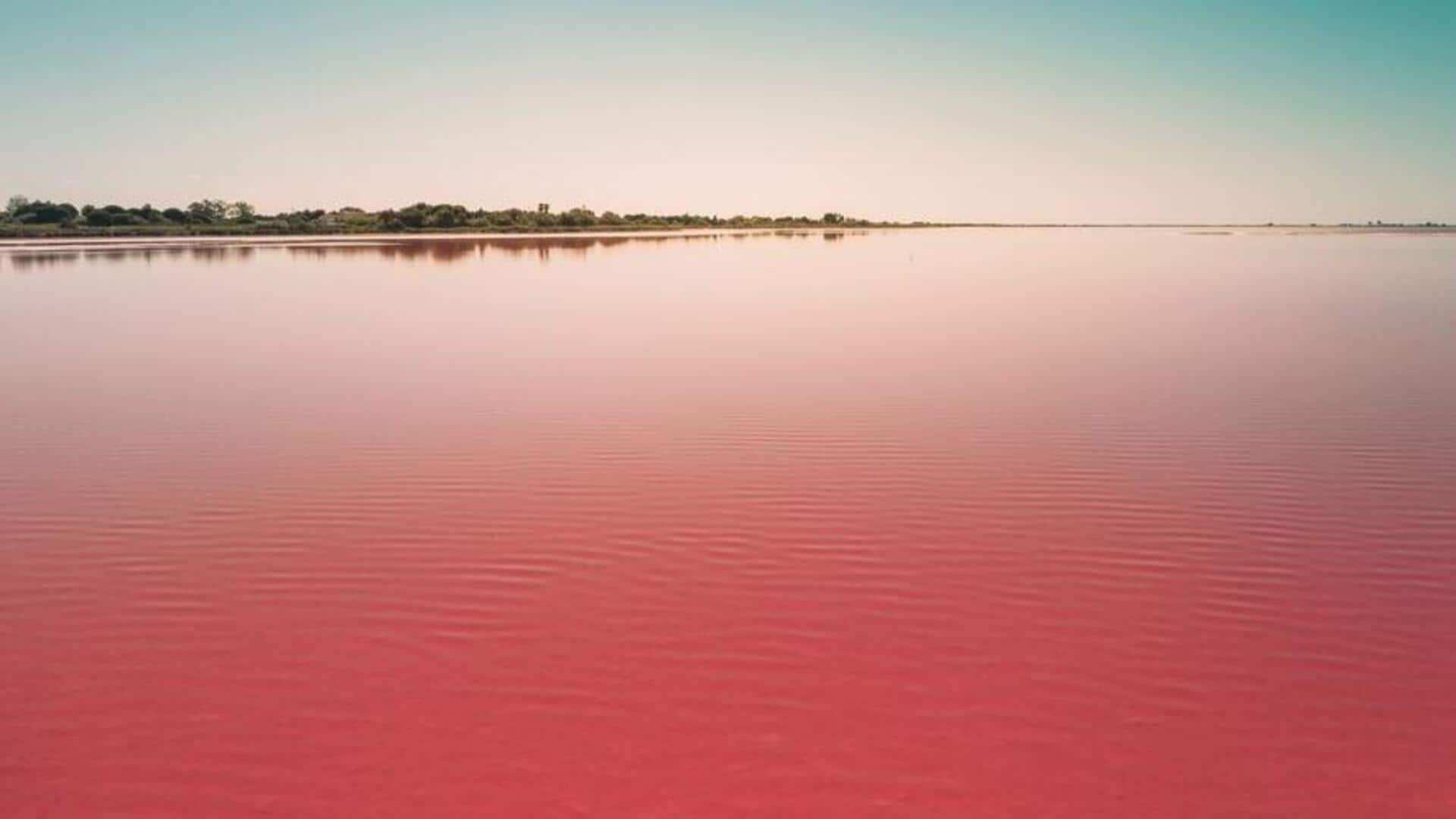
Lake Natron: All about the red lake of Tanzania
What's the story
Nestled in Tanzania, East Africa, Lake Natron is red in color with varying hues of orange and pink, which makes it different from other lakes around the world. This lake's extremely alkaline water makes it fatal. Its pH level is even higher than ammonia's! Here is everything you should know about this unique water body.
Reason
Why is Lake Natron considered deadly?
The extremely alkaline water in this lake has a pH as high as 10.5 and can burn the skin and eyes of animals that are not adapted to it. The lake is full of sodium carbonate and some salts released from the volcano Ol Doinyo Lengai. The caustic lake creates a crust on the bodies of any animals or birds that fall into it.
Color
Why is the lake red in color?
Unlike other lakes, the water in the lake doesn't flow out and keeps getting collected. The temperature of the lake can rise to 60 degree celsius. When the water evaporates, it leaves behind high amounts of salt. This hypersaline environment leads to the growth of haloarchaea, salt-loving microorganisms, giving it the red color. The area also receives very little rainfall.
Animals
Can animals manage to live in this lake?
The lake is a haven for flamingoes. Their tough skin safeguards them from burns. Besides, the lake is a safe breeding ground as its toxicity keeps predators away. Notably, some species of fish, invertebrates are able to survive toward the outer portions of the lake. The lake has a mirror-like surface that tricks birds into diving in, leading to their death.
Details
Do birds actually become stone in Lake Natron?
Any birds that dive into the lake are calcified. This means that the salt in the lake hardens their bodies which makes them look like stone. Sodium carbonate and sodium bicarbonate are responsible for this phenomenon. In fact, Egyptians used these two things to mummify their dead. In 2011, wildlife photographer Nick Brandt's pictures of these dead animals made the world take notice.
Pictures
Here's what the photographer said
Brand traveled to shoot pictures for a new book on the disappearing wildlife of East Africa in 2011 and came across this lake. "When I saw those creatures for the first time alongside the lake, I was completely blown away," says Brandt. "The idea for me, instantly, was to take portraits of them as if they were alive," he added.
Other details
Why is the lake called a flamingo paradise?
The lake is home to flamingoes who thrive here without any complications. In fact, the lake is actually the biggest breeding ground across the globe for over 2.5 million lesser flamingoes. These flamingoes are able to feed off the blue-green algae that grow in this lake. Certain other water birds, like storks, are also not negatively affected by the lake's cyanobacteria.
Information
What is the best time to visit the lake?
You can opt to travel the lake during the rainy or dry season if you need walking tours around the lake. However, don't attempt to swim in it. You can also enjoy a trek at Ol Doinyo Lengai volcano near the lake.